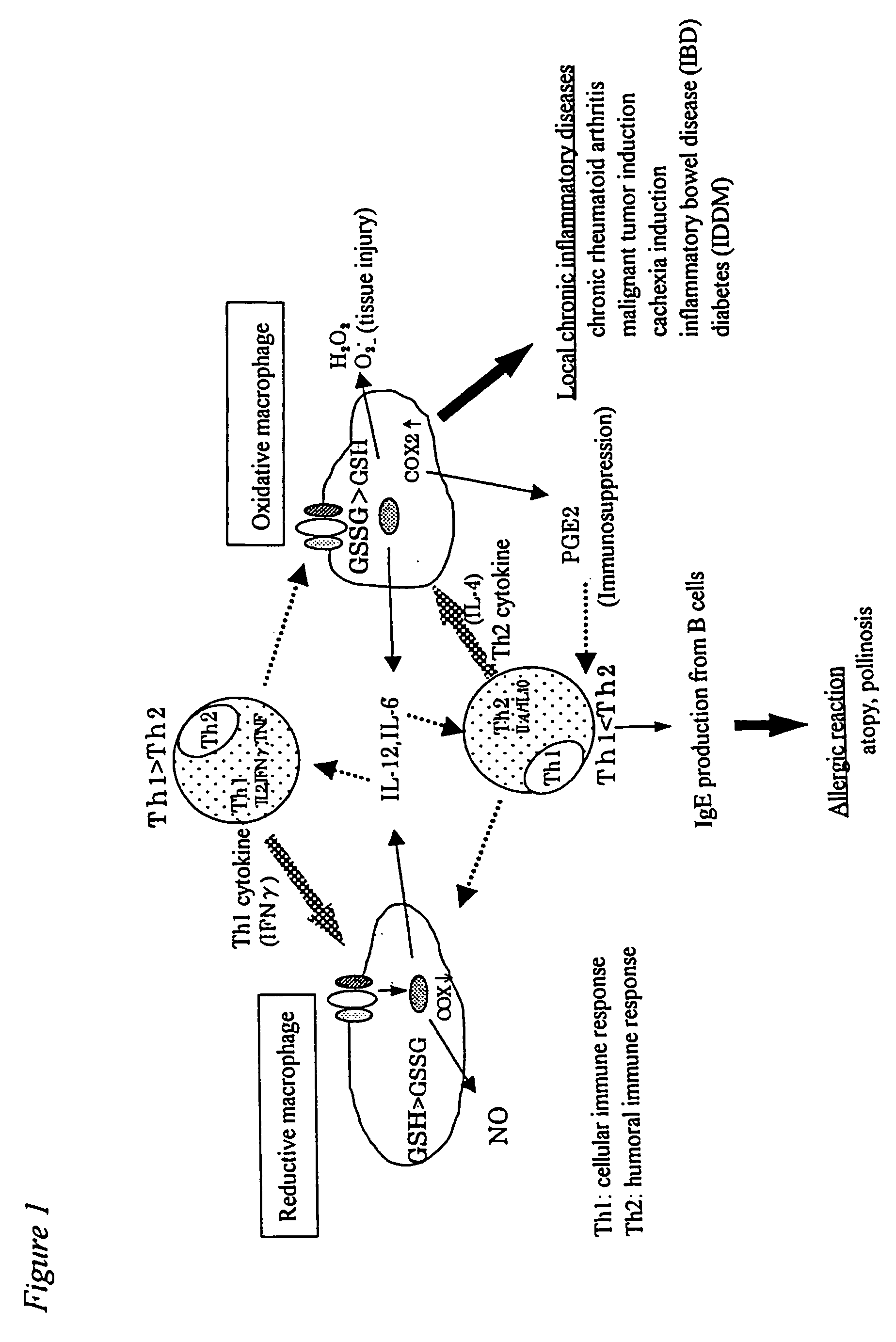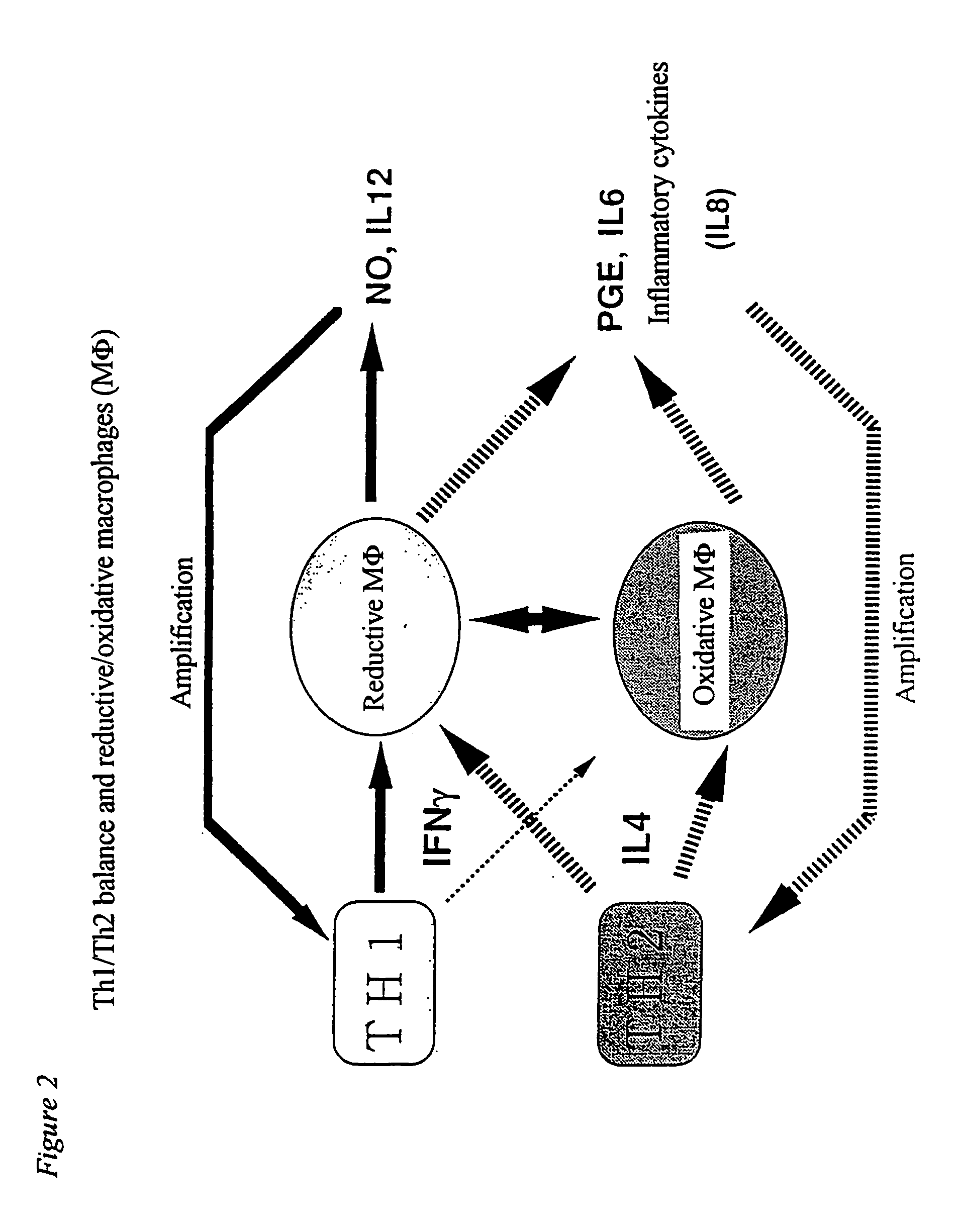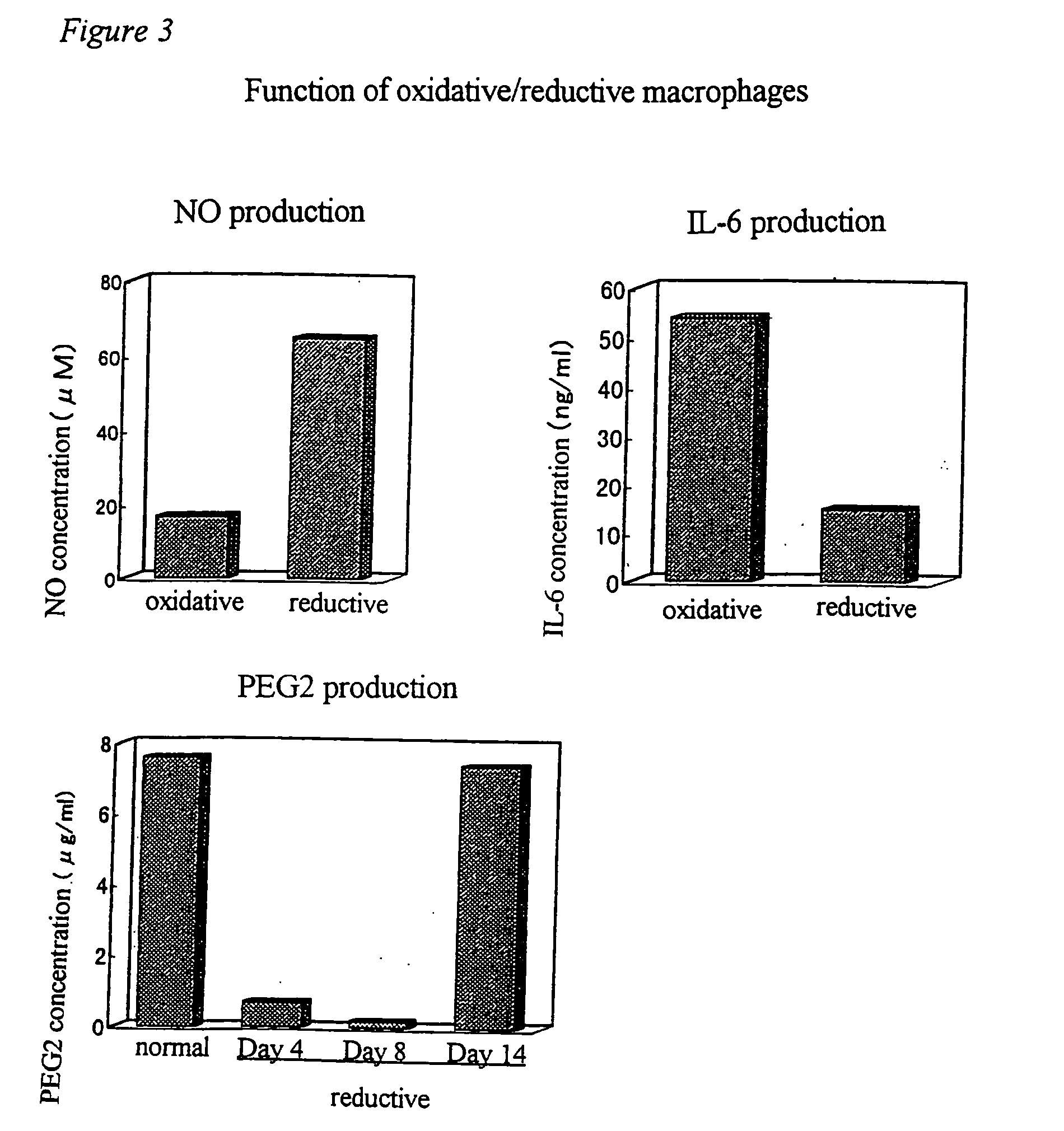Method of suppressing immune response by reducing intracellular content of glutathione in macrophages and monocytes
a glutathione and macrophage technology, applied in the field of immunomodulators, can solve the problems of immunocompromised state, abnormal behavior of immune system, subsets of immune responses have not yet been applied, etc., and achieve the effect of suppressing immune responses
- Summary
- Abstract
- Description
- Claims
- Application Information
AI Technical Summary
Benefits of technology
Problems solved by technology
Method used
Image
Examples
example 1
Test for Functions of Oxidative Macrophages and Reductive Macrophages
[0067] Oxidative macrophages were induced by administering 20 μg of LPS (lipopolysaccharide) to an abdominal cavity of a mouse, and reductive macrophages were induced by administering 100 μg of lentinan to an abdominal cavity of a mouse three times every two days. These were clarified by adhering peritoneal exudate cells to the plastic surface, then reacting the same with 10 μM of monochlorobimane at 37° C. for 30 minutes and conducting analysis with Adherent Cell Analyzing System (ACAS). The increase in the amounts of oxidative macrophages can easily be measured visually from the fact that almost no reaction product is observed, that is, gray or blue image is obtained, and the increase in the amounts of reductive macrophages from the fact that the red or yellow image is obtained, respectively.
[0068] Accordingly, NO, IL-6 and PGE2 produced by inducing the peritoneal exudate cells into oxidative end reductive cell...
example 2
Test Using Animal Disease Models which are Immunologically Deficient by Knocking Out a Gene
[0076] In order to clarify a mechanism underlying the conversion of an acute to a chronic phase and progression of inflammatory diseases, it is important to analyze molecularly why there is a difference in the production of an inflammatory mediator or a cytokine between oxidative MΦ and reductive MΦ. Generally, extracellular stimulation (ligand or the like) of the all is signaled into cells through a receptor present on the cell surface. Various kinases are activated with signals from the receptor, and transcriptional factors are also activated in cytoplasm. The activated transcriptional factors are translocated into the nucleus, and bound to target genes to conduct gene expression. According to the recent studies, it is being clarified that the intracellular redox system regulates activation of transcriptional factors, translocation thereof into the nucleus and binding with genes (Annual Rev...
example 3
Determination of the Amount of Reductive Glutathione in MΦ of Advanced Tumor-bearing Mice
[0100] Method:
[0101] Oxidative and reductive macrophages collected from peritoneal cavities of advanced tumor-bearing cachectic mice (COLON 26) and normal mice were determined. The COLON 26 transplantable tumor well known to induce a cancer cachexia was implanted subcutaneously in the back portion of CDF1 mice at a density of 5×105 cells / mouse. On day 21 after the tumor implantation, the cachectic condition was provided. Five milliliters of a physiological saline solution were intraperitoneally injected into the mice which became resistant to a therapeutic treatment. Peritoneal macrophages were collected, and suspended in a phenol red-free RPMI 1640 medium containing 10% fetal calf serum to a density of 3×105 cells / ml. One hundred microliters of the suspension were charged in a Lab-Tek Chamber Slide (#136439, supplied by Nunc), and incubated in 5% CO2 at 37° C. for 3 hours. After the nonadhere...
PUM
| Property | Measurement | Unit |
|---|---|---|
| concentration | aaaaa | aaaaa |
| pH | aaaaa | aaaaa |
| oxidative stress | aaaaa | aaaaa |
Abstract
Description
Claims
Application Information
 Login to View More
Login to View More - R&D
- Intellectual Property
- Life Sciences
- Materials
- Tech Scout
- Unparalleled Data Quality
- Higher Quality Content
- 60% Fewer Hallucinations
Browse by: Latest US Patents, China's latest patents, Technical Efficacy Thesaurus, Application Domain, Technology Topic, Popular Technical Reports.
© 2025 PatSnap. All rights reserved.Legal|Privacy policy|Modern Slavery Act Transparency Statement|Sitemap|About US| Contact US: help@patsnap.com



